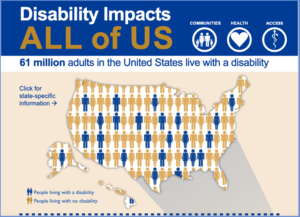Benefits of Web Accessibility
According to the World Bank Group, one billion people or 15% of the world’s population experience some form of disability (2020). Of these, the majority live in non-western countries. In the United States, 61 million adults live with a disability (2016). That’s one in four adults in the U.S.

These disabilities can impact vision, hearing, learning and cognition, or mobility—all of which can affect the ways people browse, read, and consume content online. When web content isn’t designed for people who may use the Internet differently, they lose out on the social engagement, professional opportunities, learning, business interactions, and more that are facilitated by the web.
A final point to note is that accessible web content doesn’t just open up options for people with disabilities—it helps everybody in ways that you might not realize. For instance:
- People using smart phones and watches to browse online will have an easier time using content that has been designed with responsive text and display;
- People in noisy settings benefit from having captions on videos;
- People with “temporary” disabilities like broken arms benefit from keyboard-only navigation;
- Aging people benefit from responsive text sizing, intuitive layout, and features that are still usable despite lost mobility and dexterity.
For more examples, see the W3C video, “Web Accessibility Perspectives.”
(Image citation: Centers for Disease Control. Disability Impacts All of Us.)
